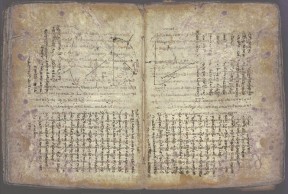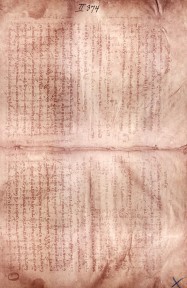HAPPY “PI” DAY!
Ernst F. Tonsing, Ph.D.
3.14.2024
This day, March 14, written as 3.14, has been designated as national “Pi Day” by the United States House of Representatives in 2009. It is also Albert Einstein’s birthday. It commemorates the mathematical formula of the constant ratio of a circle’s circumference to its diameter, 3.14159. . . . The Greek letter for “P” is π, “pi,” and refers to the perimeter of the circle. The ancient Greek mathematician, Archimedes (287-212 BC), who studied in his youth at the great center of learning, Alexandria, Egypt, but returned to his home in Syracuse in Sicily for the rest of his life, was the first to verify the ratio.

Archimedes has been one of my heroes. Years ago, I went to a lecture at the Huntington Library where the palimpsest with the tractate of Archimedes was displayed. The manuscript of Archimedes had been written on vellum (parchment) around 300 A.D. Bound into a book around 1000 A.D., the pages were scraped off by a monk who inscribed the prayers in 1229, probably in Jerusalem. It was stored in a library at Mar Saba Monastery in the desert south of Jerusalem until the German explorer and scholar Constantine Tischendorf discovered it in Constantinople in 1846. There was an attempt to copy the mathematical text by the Danish scholar Johan Ludwig in 1906 using photography and a magnifying glass. In the evacuation of Constantinople (Istanbul) in 1922, during the Greek genocide when the Greek population was being removed from Turkey, the manuscript disappeared.
The manuscript remained missing until 1998 when it appeared in a badly damaged condition at an auction in Paris. Purchased by an anonymous American collector, it was donated to the Walters Art Museum in Baltimore in 1999. The faint writing in the “Archimedes Codex” (codex=book), was revealed by using infrared, ultraviolet, and rakng lighting, as well as digital manipulation. Alongside each vellum page in the exhibit was a photograph of the writing under the later text revealing Archimedes essay. An unknown essay of 9,000 words, a commentary on “Aristotle’s Categories” by Archimedes was also discovered. It was exciting to see these pages and to see tracings of the geometric diagrams in the text by the greatest mathematician of antiquity.

Archimedes also discovered the screw device for raising water, a pump still used for irrigation and to pump water out of ships, war engines to drop big rocks on ships, cranes to lift whole ships out of the water, and sets of mirrors to incinerate enemy ships. He also proved to King Heiro that a gold crown intended to be donated to a temple was a forgery by noting the displacement of water by immersing a real gold piece with an imitation. The crown could not be melted down into a cube to be measured, so Archimedes had to discover a way to determine its volume in another way. Since the crown displaced more water, the denser gold in it had been mixed with silver or another lighter metal. King Heiro had been cheated by the goldsmith.
Archimedes was taking a bath when he observed water spilling out over the sides of the tub. He realized that this was the solution to his problem of determining whether the crown was pure gold. He was so excited that he ran naked down the streets of Syracuse shouting “I have found it! I have found it!” By the way, the Greek word he used to exclaim “I have found” (it) is not pronounced in Greek as “y-rika” but “horeka.” Those Californians up north have it all wrong!
I’m not sure how to celebrate “Pi Day.” Perhaps we can hoist a glass of water (commemorating Archimedes’ famous bath), or if you don’t have water, use milk or whatever, and shout three loud and hearty “Horekas”!
